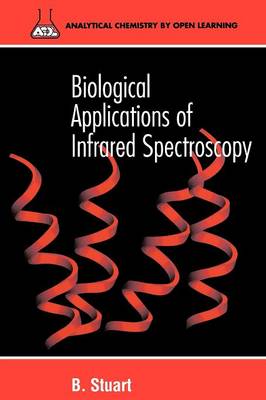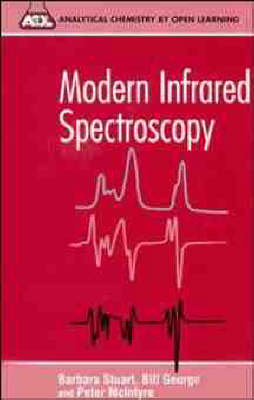Analytical Chemistry by Open Learning
2 total works
Infrared spectroscopy (IR) is a well established analytical technique for the identification of organic molecules. In this first dedicated volume, the theory of IR is described and is then related to various biological systems. Chapters on instrumentation, sample preparation and the interpretation of spectra give the reader practical help in using the technique. A comprehensive applications chapter illustrates the diversity and power of this technique in real systems.
Modern Infrared Spectroscopy Infrared spectroscopy is one of the most powerful spectroscopic techniques available in analytical chemistry, with applications across a wide range of fields. Modern Infrared Spectroscopy presents an introduction to the technique which will provide newcomers to the field with both a sound understanding of the basic principles behind the method and a wealth of highly practical information. Chapters on spectrum interpretation and quantitative analysis enable the reader to obtain the most important information from their spectra, while later chapters provide an introduction to some of today's most important applications of the technique in fields as diverse as drug analysis, pollution monitoring and the analysis of polymers. Modern Infrared Spectroscopy will prove invaluable to all those studying and using infrared spectroscopy for the first time. The self-assessment questions enable the reader to progress through the book confident that they are acquiring the necessary skills and underpinning knowledge to make effective use of this powerful and sophisticated technique.
The cover figure is redrawn from the Perkin-Elmer Application Note on Derivative Spectroscopy, Perkin-Elmer, 1984. Permission for its use has been granted by Perkin-Elmer Limited. Analytical Chemistry by Open Learning This series provides a uniquely comprehensive and integrated coverage of analytical chemistry, covering basic concepts, classical methods, instrumental techniques and applications. The learning objectives of each text are clearly identified and the student's understanding of the material is constantly challenged by self-assessment questions with reinforcing or remedial responses. The overall objective of Analytical Chemistry by Open Learning is to enable the student to select and apply appropriate methods and techniques to solve analytical problems, and to interpret the results obtained.
The cover figure is redrawn from the Perkin-Elmer Application Note on Derivative Spectroscopy, Perkin-Elmer, 1984. Permission for its use has been granted by Perkin-Elmer Limited. Analytical Chemistry by Open Learning This series provides a uniquely comprehensive and integrated coverage of analytical chemistry, covering basic concepts, classical methods, instrumental techniques and applications. The learning objectives of each text are clearly identified and the student's understanding of the material is constantly challenged by self-assessment questions with reinforcing or remedial responses. The overall objective of Analytical Chemistry by Open Learning is to enable the student to select and apply appropriate methods and techniques to solve analytical problems, and to interpret the results obtained.

